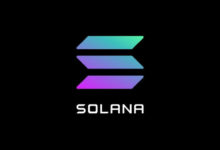Circle’s Cautious USDC Approach Has Paid Off, Despite Missteps

The Chief Financial Officer of Circle Internet Financial, Jeremy Fox-Green, earlier this week reaffirmed the cryptocurrency financial services firm’s plan to go public later this year. On the one hand, this isn’t news: Circle’s plans were first announced in June of last year.
On the other hand, the affirmation is huge considering how drastically circumstances in the digital asset industry have changed in the meantime. That Circle is still healthy enough to go public in the current bearish environment is a huge vindication for a company that has made its share of missteps, and which took the better part of a decade to find a killer app with its USDC stablecoin.
This article is excerpted from The Node, CoinDesk’s daily roundup of the most pivotal stories in blockchain and crypto news. You can subscribe to get the full newsletter here.
There was a time when Circle seemed like a spent and directionless organization. Founded by Jeremy Allaire in 2013 as an early crypto payments company with an institutional bent, Circle was arguably a bit premature in providing retail services. The company also devoted a lot of energy to jumping over regulatory hurdles at a time when many crypto firms still dismissed such niceties. Way back in 2015, for instance, Circle became the first company to earn New York’s much-maligned Bitlicense.
Not too long ago, Circle seemed to be flailing for purpose so badly that those regulatory efforts began to seem like wasted effort. The apparent lack of mission clarity was thrown into sharpest relief when Circle bought the early, somewhat reputationally sketchy crypto exchange Poloniex in 2018 – and then sold it a year later for a $156 million loss. Circle then rapidly sold off many business lines, including a mobile investing app to Voyager Digital (R.I.P.) in February of 2020.
Rather than a sign of desperation, though, this pruning was part of a plan to focus entirely on the fully backed USDC stablecoin. That didn’t always seem like a slam-dunk: USDC had attracted barely more than $500 million worth of deposits by early 2020, compared to $4.2 billion worth of competitor Tether’s USDT token then in circulation.
But, despite missteps along the way, Allaire and company can take a preliminary victory lap for their comparatively cautious approach. From just 12% of Tether’s size at the start of 2020, Circle is now on a trajectory to match and maybe even exceed its primary competitor’s scale.
Transparency and oversight
Plagued by market uncertainty and regulatory scrutiny, Tether’s circulating market cap has dropped from a peak of $83 billion in May to $66 billion in mid-July. To Tether’s immense credit, redemptions have gone smoothly. But some of those redeemers seem to have made a more or less direct switch to USDC, which saw deposits grow from $49 billion in May to $55 billion today.
That reversal of fortune is almost certainly because of Tether’s much more complicated relationship to transparency and regulation. USDT is structured similarly to USDC, with off-chain assets backing a dollar-denominated stablecoin. But Tether has been the target of skeptics for years, both because of its eyebrow-raising relationship to the Bitfinex exchange and because it has not released a detailed and trustworthy report of USDT’s backing assets.
Among other concerns, it seems Tether may be holding a significant amount of Chinese commercial paper, which is only looking more troubled as the Chinese real estate market continues degrading. In a worst case scenario, there’s a possibility that Tether would not be able to liquidate those assets at dollar parity, meaning some percentage of USDT tokens would not be redeemable for USD.
Last week, by contrast, Circle issued a detailed asset breakdown which, though unaudited, claimed that Circle’s USDC stablecoin is backed entirely by U.S. dollars and highly liquid short-term U.S. Treasury bonds. It’s worth noting here why Circle releasing an unaudited backing report is not the same as Tether issuing an unaudited report: Circle, simply because it is a registered U.S. financial entity, is subject to material forces that should keep it honest. Circle has made numerous U.S. Securities and Exchange Commission (SEC) filings ahead of its public listing, for instance. Critics have demanded a third-party audit from Tether in large part because Tether is not clearly subject to any highly trusted regulatory regime.
There is increasing consensus that stablecoins may be crypto’s predominant killer app, serving not just as a safe haven for crypto day traders, but also as a genuine improvement over the wire system for international trade, and a useful personal finance tool for individuals abroad who can’t easily access conventional dollars. U.S. regulators seem increasingly warm to building controls that can assure the trustworthiness of digital dollars issued by entities like Circle.
Long road
Over the course of nearly a decade, Jeremy Allaire has done the long, hard work of positioning Circle to benefit from the growth of stablecoin demand. Now, Circle is positioned to make a public market debut at a time when the lack of hype and deflated market could make it a discount buy.
My only critique is that the plan is still to use a special purpose acquisition company (SPAC) rather than a conventional initial public offering (IPO). A SPAC is a listed shell company that would become Circle through a reverse merger. It’s a method of publicly listing a stock that has lower disclosure requirements than an IPO.
The plan might be difficult to change at this point, at Circle’s misfortune. Trust in the entire SPAC approach has been significantly undermined by its use by figures like Chamath Palihapitiya to sell baskets of garbage stocks with lessened disclosure at times of maximum hype. The structure has come to seem low-rent and scammy relative to other elements of the Circle offering.
But despite that gripe, the headline here is hugely positive. Allaire’s marathon effort and careful approach is about to pay off for him and investors in a big way, while more than a few of his overextended and incautious competitors are lying in a ditch. It’s a lesson worth remembering for the next cycle of crypto hype, when young, optimistic, inexperienced founders once again start promising the moon.







 Bitcoin
Bitcoin  Ethereum
Ethereum  Tether
Tether  USDC
USDC  Dogecoin
Dogecoin  Cardano
Cardano  TRON
TRON  Bitcoin Cash
Bitcoin Cash  Chainlink
Chainlink  Polygon
Polygon  Litecoin
Litecoin  LEO Token
LEO Token  Dai
Dai  Hedera
Hedera  Ethereum Classic
Ethereum Classic  Stacks
Stacks  Cronos
Cronos  Stellar
Stellar  Cosmos Hub
Cosmos Hub  OKB
OKB  Maker
Maker  Theta Network
Theta Network  Monero
Monero  Algorand
Algorand  NEO
NEO  Gate
Gate  Tezos
Tezos  KuCoin
KuCoin  Synthetix Network
Synthetix Network  EOS
EOS  IOTA
IOTA  Bitcoin Gold
Bitcoin Gold  Tether Gold
Tether Gold  TrueUSD
TrueUSD  Enjin Coin
Enjin Coin  Zilliqa
Zilliqa  Holo
Holo  Ravencoin
Ravencoin  0x Protocol
0x Protocol  Siacoin
Siacoin  Qtum
Qtum  Basic Attention
Basic Attention  Dash
Dash  Decred
Decred  Zcash
Zcash  Ontology
Ontology  NEM
NEM  Lisk
Lisk  Waves
Waves  DigiByte
DigiByte  Numeraire
Numeraire  Status
Status  Nano
Nano  Hive
Hive  Pax Dollar
Pax Dollar  Steem
Steem  OMG Network
OMG Network  Huobi
Huobi  BUSD
BUSD  Ren
Ren  Bytom
Bytom  Bitcoin Diamond
Bitcoin Diamond  HUSD
HUSD  Kyber Network Crystal Legacy
Kyber Network Crystal Legacy  Energi
Energi  Augur
Augur